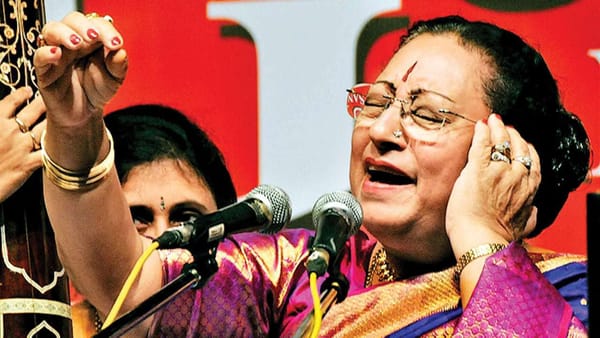KODER HOUSE
Opposite the breathtaking beautiful beach at Fort Kochi Kerala India, stands a magnificent rich wine colored majestic three story heritage boutique hotel called the KODER HOUSE.
 |
| Front View of Koder House, Fort Kochi |
Opposite the breathtaking beautiful beach at Fort Kochi Kerala India, stands a magnificent rich wine colored majestic three story heritage boutique hotel called the KODER HOUSE. You cannot miss it because the building makes a statement on the streets of Fort Kochi A mix of old houses built by the Portuguese, Dutch and British in these colonial periods line the streets of Fort Kochi. St Francis Church was built in 1503 by the Portuguese as a Catholic church. Vasco da Gama was once buried in this church which now falls under the Church of South India and is one of the national monuments. Santa Cruz Basilica, also built by the Portuguese in the 16th century, was later destroyed by the British and rebuilt near the end of 19th century
KODER HOUSE is indeed a landmark on the pretty streets of Fort Kochi and you know when you take a glimpse from the outside great history and mysteries of a rich celebrated past awaits you. There are surprises in their unusual décor of Junior Suites and the Maharajah suite with their ornate decor in their pristine 8 rooms within this building . There is a great gastronomical journey with their specially selected delectable menus of authentic Kerala cuisine which you can tuck into . You can sit down to an evening of selected wines or have an intimate culinary affair with the awesome seafood platter a signature dish of this hotel- the chef’s special. I had one and I definitely recommend it .It was divinely delicious that it was etched in my mind that I would definitely come back for more. Seafood of fresh huge tiger prawns and Seer fish with steamed Calamari all freshly caught from the sea opposite on a bed of mashed potatoes and steamed vegetables cooked to perfection and not heavy on the digestive system at all because it is healthy .In the background. you can listen to the soft melody of Indian instruments played by talented musicians along with the sweetness of the flute bringing a great experience of joy and the rich heritage of the days of the Maharajahs of India..
 |
| A Maharaja suite at KODER HOUSE |
KODER HOUSE IS MORE THAN A HERITAGE SIGHT, it is an experience of a journey into the rich history of the Malabaris and the Jews of Kerala which you must not miss if you come to Fort Kochi.UNTIL RECENTLY, IT BELONGED TO THE MOST ILLUSTRIOUS COCHIN JEWISH FAMILY, THE KODERS. THIS HOUSE HAD BEEN A HOST TO PRESIDENTS, PRIME MINISTERS, VICEROYS, AMBASSADORS, NOBEL LAUREATES, HOLLYWOOD DIRECTORS AND PROMINENT DIGNITARIES. THIS DWELLING ALSO FINDS A PROMINENT PLACE ON INTACH’S LIST OF HERITAGE SITES, AND A VISIT TO FORT KOCHI IS CONSIDERED TO BE INCOMPLETE WITHOUT A VISIT TO THIS HISTORIC SITE.
COCHIN JEWS
Cochin Jews, also called Malabar Jews are of Mizrahi heritage and the oldest group of
Jews in India, with possible roots claimed to date to the time of King Solomon. The Cochin Jews settled in the Kingdom of Cochin in South India, now part of the state of Kerala.
Becoming known as the Malabari Jews, they built synagogues in Kerala beginning
in the 12th and 13th centuries] and developed Judeo-Malayalam, a dialect of Malayalam language.
Following expulsion from Iberia in 1492 by the Alhambra Decree, a few families of Sephardic Jews eventually made their way to Cochin in the 16th century. They became known as Paradesi Jews (or White Jews).
After India gained its independence in 1947 and Israel was established as a nation, most
Cochin Jews emigrated from Kerala to Israel in the mid-1950s
Central to the history of the Cochin Jews was their close relationship with Indian rulers.
This was codified on a set of copper plates granting the community special privileges.
The date of these plates, known as "Sâsanam", is contentious. The plates are physically
inscribed with the date 379 CE, but in 1925, tradition was setting it as 1069 CE
"Black Jew" of Cochin
In 1524, the Muslims, backed by the ruler of Calicut (today called Kozhikode and not to be confused with Calcutta), attacked the wealthy Jews of Cranganore because of their primacy in the lucrative pepper trade. The Jews fled south to the Kingdom of Cochin, seeking the protection of the Cochin Royal Family . The Hindu Raja of Cochin gave them asylum. Moreover, he exempted Jews from taxation but bestowed on them all privileges .
The landmark that causes more public and visitor interest is a series of pre-colonial Chinese fishing nets on the waterfront, believed to have been introduced by Chinese traders in the early 14th century. In the BC period, the region that is today known as Kerala was covered by mangrove woods. Turf and sand banks were created with the rise in sea-level which formed the shape of the coastal area as we see it today. The name Cochin implies "co-chin", meaning "like-China". It looked like China when the Chinese came to the region during the 14th century and installed Chinese nets. You can just take a walk down from Koder House to the beach and see the fishermen making their fresh catch of the day and that too enriched with history.
 |
| The Lounge @ KODER HOUSE |
Today KODER HOUSE is proudly owner by Entrepreneur Mr Vicky Raj who retains history in his décor and service of this splendid rich experience. Mr Vicky Raj hails from a family with its roots in Kozhikode so close to his heart when serving his hosts is to give them a heritage experience that they will always remember. He will with a twinkle in his eye greet you with a smile and impress upon you that KODER HOUSE is not just a place to nestle into for the night it is a historical journey which he takes a lot of pride in – let him tell you the rest when you visit KODER HOUSE .He is a Hotelier who warms up to you with a personal touch




